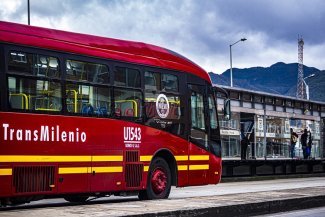Does Italy have a hate problem? Looking at recent political developments and the growing anti-migrant feeling amongst the general population and the media, it might appear so. Italy’s position on the frontline of the ongoing humanitarian disaster facing migrants and refugees trying to reach the safety of Europe via southern Italy - of the 171,635 migrants and refugees that arrived in Europe by sea in 2017, just under 70 per cent landed in Italy according to the International Organization of Migration (IOM) - appears to seems to have reawakened the old beast of "hostility, racism, xenophobia and unjustified fear of others," according to Amnesty International Italia’s director general Gianni Rufini. And nowhere is this more obvious than in the discourse surrounding the current general election campaign.
This Sunday, Italy will head to the polls. At the moment, a right-wing coalition made up of former prime minister Silvio Berlusconi’s centre-right Forza Italia (Forward Italy), Matteo Salvini’s far-right Lega (League, formerly Lega Nord or Northern League) and the centrist Noi con l’ Italia-UDC (Us with Italy-Union of the Centre) is expected to win more than the 30 per cent of the vote.
Migration, and how to control it, has been the main theme of this election cycle, and Italy’s population of 600,000 undocumented migrants, mainly from sub-Saharan Africa, have borne the brunt of the strong anti-immigration rhetoric. Salvini’s slogan is "Italians First", around which he has built a xenophobic and racist narrative about the demographic replacement of white Europeans in Italy with black Africans. Berlusconi himself described African migrants and refugees as a "social time-bomb waiting to explode" following the non-fatal shooting of six African migrants in the central Italian city of Macerata by 28-year-old neo-Nazi Luca Traini on 3 February. Traini says he undertook the two-hour attack to avenge the murder of an 18-year-old Italian woman, for which a Nigerian migrant is being held suspect.
On 10 February 2018, thousands of people marched in the streets of Macerata to protest the shootings. According to Leonardo Bianchi, VICE Italia’s news editor, the demonstration was a "show of strength" as the organisers [local social centre, Sisma] found themselves in "a very difficult context," caught between the generalised hostility towards migrants and the lack of support for the protests from the unions and Matteo Renzi’s centre-left Democratic Party.
Indeed, the lack of strong condemnation over the shootings from Italy’s major political players only serves to underline the level of toxicity surrounding the current migration debate which is compounding by the lingering effects of the financial crisis of 2007/08.
According to Elia Rosati, a history researcher at Milan University:
"Luca Traini is a product of all of this. He was a former candidate for Lega, he is a neo-fascist and he concluded his rampage on that day with the Italian flag on his shoulders, in front of a monument while making a fascist salute.
This is not Italy’s first fascist ’lone wolf’ attack. In 2011, a CasaPound sympathiser killed two Senegalese street vendorsand wounded three others in Florence. In fact, the Bologna-based anti-fascist collective Infoantifa Ecn has produced an interactive map detailing all 145 of the fascist attacks that have taken place in Italy since 2014, mostly at the hands of members of Italy’s two most notable far-right parties in Italy - Forza Nuova (New Force) and CasaPound, which was founded in 2003 and named after the American poet Ezra Pound.
Continuity and innovation
Rosati notes that both continuity and innovation are key features of the current structure and momentum of the Italian far-right.
The former can be found in the history of the Movimento Sociale Italiano (Italian Social Movement) which was the largest post-fascist party in Europe following the Second World War.
"The party changed its name in 1995 to Alleanza Nazionale (National Alliance), while maintaining 90 per cent of its leadership and without operating a radical shift, despite the attempts of [the former leader] Gianfranco Fini," says Rosati.
"The decade of the 1990s was decisive. With Berlusconi the Movimento Sociale Italiano entered a government with Lega, which is currently one of the most important right-wing parties at a European level. Lega is an Italian peculiarity: at once regionalist, currently nationalist but also neoliberal and xenophobic."
Rosati continues: "The Italian Right has always been strong and stable in government. As a result, all the legislation exercised against neo-fascism and neo-Nazism until 1993 has been put aside, allowing the reorganisation of some groups that were born at the end of the 1990s, such as Forza Nuova, which was founded in 1997 by Roberto Fiore, who had migrated to the United Kingdom to avoid arrest as he had been involved in the investigations on the Bologna’s attack [where 85 people were killed in August 1980 as a result of a neo-fascist terrorist attack on Bologna Central Station] alongside one of CasaPound’s ideologues, Michele Adinolfi, who returned to Italy from France in 2000.
"All these organisations are at least 20 years old and could not have been born without the relationships and sympathies of the right in government."
CasaPound and Forza Nuova are currently following two different approaches, as Roberto Maggioni, journalist at Radio Popolare (People’s Radio) explains. "CasaPound wants to enter in the parliament and for this reason, they have understood that their weapon is communication."
"Forza Nuova has lost some support during these years and for this reasons they are opting for actions such as the blockade against the [liberal] newspaper group L’ Espresso."
The growing interest of some journalists towards CasaPound has contributed towards normalising the party, as well as to glamourising fascism, as a recent piece in Open Democracy points out.
The language used by Forza Nuova, CasaPound and the two leading right-wing parties, Lega and Giorgia Meloni’s Fratelli d’Italia (Brothers of Italy), is not very different. "What can be said, without any doubt, is that beyond the exception of the respectability facade, the language of the right and of the far-right in Italy is basically mutual," Bianchi of VICE Italia says.
For the occasion of the Italian election on 4 March, Amnesty International Italia has launched a project called Il Barometro dell’ Odio (The Hate Barometer) monitoring hate speech during this particularly toxic election campaign.
"The fact that the 95 per cent of hate speech on social media in this electoral campaign comes from the centre-right is worrying on both the quantitative and qualitative fronts. […] All the leaders of the centre-right, Meloni, Salvini and Berlusconi, have used discriminatory language and hate speech," Amnesty Italia spokesperson Riccardo Noury tells Equal Times.
While the electoral prospects of Forza Nuova and CasaPound might not be promising, as not even the latter might reach the 3 per cent of the votes needed to enter parliament, Salvini and Meloni’ s parties are expected to collect almost 20 per cent of the vote together, and more than 30 per cent in their coalition with Berlusconi’s Forza Italia.
The popularity of far-right positions
Lega and Fratelli d’Italia (largely composed by members of the post-fascist party Alleanza Nazionale) have been the main partners of Berlusconi’s governments in the past, but under new leadership for both parties, efforts are being made to broaden their appeal.
Lega, for example, has exchanged its northern Italy-centred focus for a nationalist one. It also helped mainstream some of CasaPound’s fascist, racist theories through an earlier alliance.
"Under Salvini’s leadership, Lega turned to neo-fascism and nationalism with an outlook to ’strongmen’ like Putin, with whom Salvini has a great relationship," Maggioni explains.
With regards to Fratelli d’Italia, although it has been less visible than Lega in this election contest and is only expected to win 5 per cent of the vote, there are many similarities between its leader Meloni and Lega’s Salvini, as Rosati observes. "They both rose from the youth organisations of their parties. Meloni, unlike Salvini, keeps very radical positions, but she is not as criticised as he is. She has a very stable leadership and more respectability than [Salvini]."
For this reason, Rosati says Fratelli d’Italia is more likely to "represent a new landing for neofascism in the future as it keeps its stability, and, above all, it remains in the Italian neo-fascist family".
There are also three other core factors that can explain the rise of the far-right and the radicalisation of centre-right positions: the government’s recent attempts to curb the work of NGOs rescuing migrants in the Mediterranean, Berlusconi’s political comeback and the banalisation of the 20 years of fascism in the country.
On the first point, as well as undermining fundamental humanitarian principles, the government’s recent attacks on NGOs marked a shift to the right in the Democratic Party’s migration policy. With regards to the re-emergence of Berlusconi, while he has no prospect of being elected (he is currently banned from public office), he has once again proved his enduring influence and willingness to create a space for far-right elements in Italian politics.
"Berlusconi and the Right have managed to determine the country’s public grammar also from a historical perspective," says Rosati, speaking to the third point. "The impact of this over the last 20 years has changed the country’s mentality, something that has exploded with the [current political] crisis".
As the 4 March election approaches, one thing is certain: the popularity of far-right discourse, especially when it comes to tackling migration at any cost, seems to be an immoveable point in Italian politics - at least for now.
In the new parliament, Lega and Fratelli d’Italia will make sure that they provide representation for these views, capitalising ever more on the fears of the Italian populace to implement even tougher migration policies.









